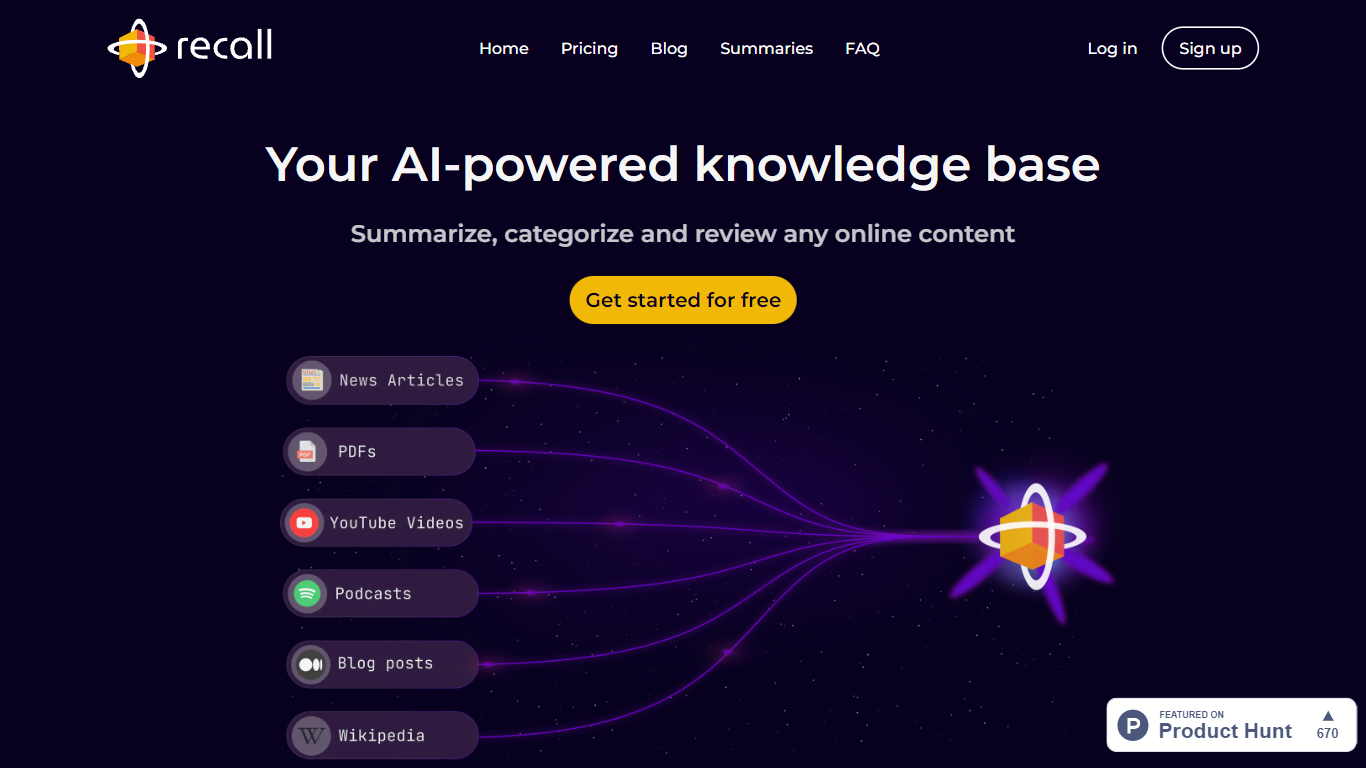Recall vs Typeset
Explore the showdown between Recall vs Typeset and find out which AI Summarizer tool wins. We analyze upvotes, features, reviews, pricing, alternatives, and more.
In a face-off between Recall and Typeset, which one takes the crown?
When we contrast Recall with Typeset, both of which are exceptional AI-operated summarizer tools, and place them side by side, we can spot several crucial similarities and divergences. The upvote count favors Typeset, making it the clear winner. Typeset has 24 upvotes, and Recall has 10 upvotes.
You don't agree with the result? Cast your vote to help us decide!
Recall

What is Recall?
Recall is a powerful tool that allows you to easily summarize and save any online content to your personal knowledge base. Whether it's a YouTube video, a blog post, a PDF, an article, or any other type of online content, Recall has got you covered. With Recall, you can quickly and efficiently extract key information from these sources and store them in an organized and easily accessible manner.
One of the key features of Recall is its ability to generate concise and accurate summaries of the content you save. Instead of having to read or watch the entire piece again, Recall's summarization capabilities allow you to get the main points and key takeaways in a matter of seconds. This saves you valuable time and makes it easier for you to revisit and reference the information whenever you need it.
In addition to its summarization capabilities, Recall also offers a robust saving and organizing system. You can create folders and categories within your personal knowledge base, making it easy to keep track of different topics and themes. The saved content is fully searchable, allowing you to quickly find what you're looking for without wasting time scrolling through endless documents or videos.
The user interface of Recall is intuitive and user-friendly, making it accessible to both tech-savvy individuals and those who are less familiar with technology. The tool is designed to be simple and straightforward, with clear instructions and prompts guiding you through the process of summarizing and saving your online content.
Typeset

What is Typeset?
Your platform to explore and explain papers. Search for 270M+ papers, understand them in simple language, and find connected papers, authors, topics.
Recall Upvotes
Typeset Upvotes
Recall Category
- Summarizer
Typeset Category
- Summarizer
Recall Pricing Type
- Freemium
Typeset Pricing Type
- Free
